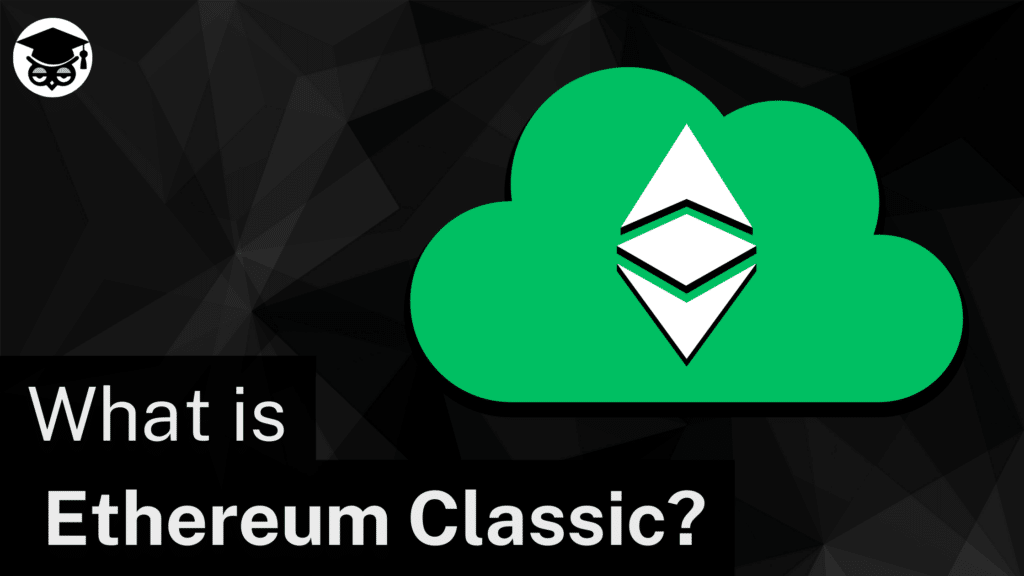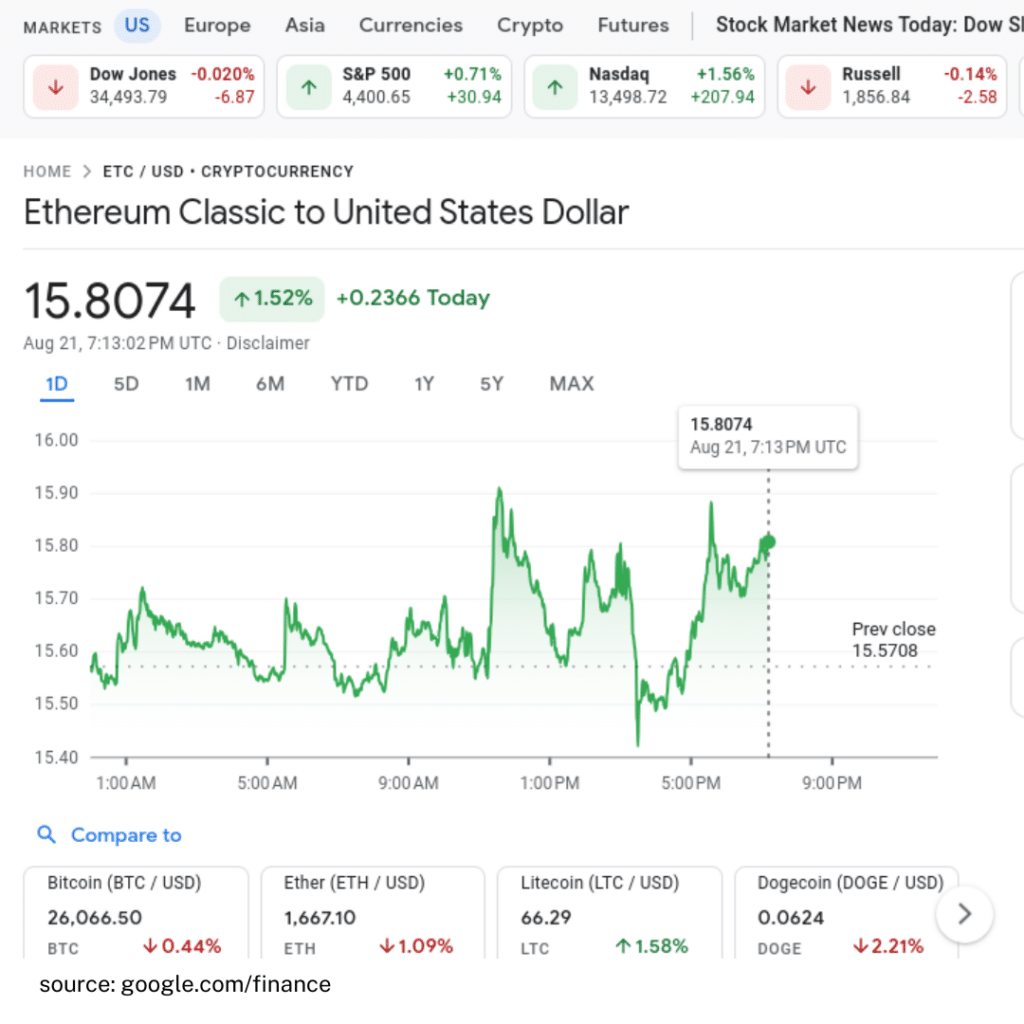What is Ethereum Classic?
Ethereum Classic is a blockchain protocol and also a cryptocurrency (in crypto, blockchains and their native cryptocurrencies often share the same name).
The Long Definition
Ethereum Classic is a blockchain protocol that emerged due to a fork of the Ethereum blockchain. A fork is a branching of a blockchain that occurs as a result of changes to the protocol’s rules.
Ethereum Classic has its own cryptocurrency with the same name, Ethereum Classic (ETC). Overall, the protocol can be seen as a continuation of the original Ethereum blockchain. It contains the full, unaltered history of Ethereum. It also uses smart contracts, which allow developers to build on its platform.
ETC is less popular and less valuable than its sister crypto, ETH. This is because, after the fork, the majority of the community chose to support the Ethereum blockchain over Ethereum Classic. Still, it has an active community that supports its blockchain.

History of ETC
ETC shares the same history as ETH up until July 2016. The Ethereum network, created by Vitalik Buterin, was released in 2015. It introduced smart contracts. These are lines of code that make the Ethereum blockchain programmable. They automate the execution of tasks based on certain specified conditions.
ETC was formed after a split of the original Ethereum blockchain. This split occurred after The DAO, a major protocol on the network, was hacked.
The hack caused a dispute within the community; members couldn’t agree on which path to take to make the Ethereum blockchain more secure.
How did this happen?
One of the earliest projects to be built on the Ethereum network was the DAO (launched in April 2016). A ‘project’ is a way to use the blockchain for other purposes than just buying or selling cryptocurrency.
A DAO is a decentralized autonomous organization (DAO). This is an entity where ownership and management are distributed among all members who get to vote on all major decisions.
The DAO attracted a substantial investment. So much so that its smart contracts held more than 11 million ether. These accounted for around 14% of all ether tokens issued as of May 2016.
However, a paper published the same month revealed several security vulnerabilities with the project’s smart contracts. The DAO was slow to respond and hackers took advantage of the vulnerabilities. During the attack, they managed to steal 3.6 million ether invested in the platform. The stolen ether was valued at $50 million at the time.
How Did the Hack Affect Ethereum?
The scale of the hack caused a stir in the Ethereum community. A dispute arose between members as to what the next move should be. Some proposed a hard fork to reverse the effects of the hack. A hard fork is a major change to a protocol that results in the creation of a new blockchain network.
The idea here was to change Ethereum’s code base and “roll back” the chain. This rolling back involved returning the network to a point before the hack occurred. That way, Ethereum would go on as if the hack never occurred.
Not everyone was for this move. Some members argued against it, preferring instead to keep the network unchanged.
A vote was eventually held, with the majority agreeing to reverse the blockchain. However, those against this proposal didn’t accept the loss and continued using the original version of Ethereum.
This resulted in two separate chains. The newer, reversed blockchain became the Ethereum network with its own new cryptocurrency, ETH. The older, unaltered one became Ethereum Classic, with ETC as its cryptocurrency.

Ethereum vs. Ethereum Classic
There are several key differences between Ethereum Classic and Ethereum. The most significant is that Ethereum Classic contains an unaltered history. It’s the original Ethereum blockchain, hence the ‘classic’ in the name.
Ethereum, on the other hand, has an altered history. After the vote, the blockchain was rolled back to erase the theft from the network.
Another difference is the consensus mechanism. Ethereum Classic uses proof-of-work (PoW) while Ethereum now uses proof-of-stake (PoS) to secure the network. PoS relies on miners who compete to solve complex mathematical puzzles in exchange for rewards. On Ethereum Classic, the miners are rewarded in ETC.
Ethereum also used this consensus mechanism before The Merge in 2022. The Merge enabled the shift to PoS, which uses validators to confirm transaction data. They receive ETH as a reward.
Finally, there is the total supply. ETH has no limits on its total amount, while the total supply of ETC is hard-capped at 210,700,000. This means that once we have 210.7 million ETC coins in supply, no new ones will be minted.
To achieve this, the cryptocurrency is developed such that mining becomes harder with time. Its block reward is also cut after every two years.
The only similarity between Ethereum and Ethereum Classic is that both have smart contract capabilities. Smart contracts are self-executing lines of code deployed on a blockchain.
General Outlook of Ethereum Classic and its Future
Ethereum Classic aims to be a decentralized global payment network. To do this, the network has undergone many upgrades and improvements. Smart contracts still remain at the heart of its system.
But so far, Ethereum Classic lags behind Ethereum. It hasn’t attracted nearly as many investors and developers and ETC remains less popular and valuable than ETH. So, its future is not as promising as Ethereum.
Want to join the Dypto journey? Follow our socials!